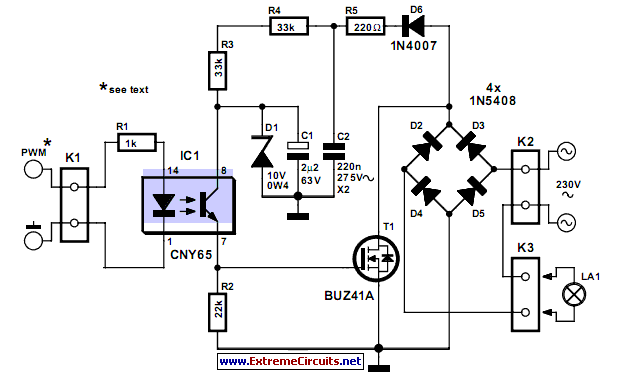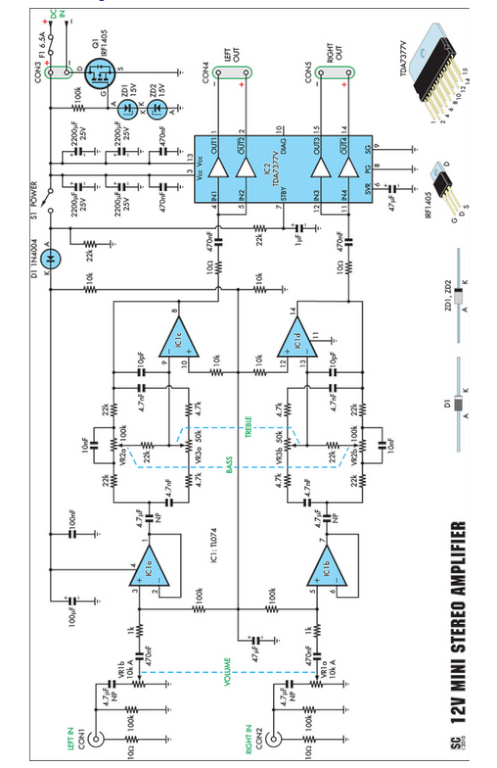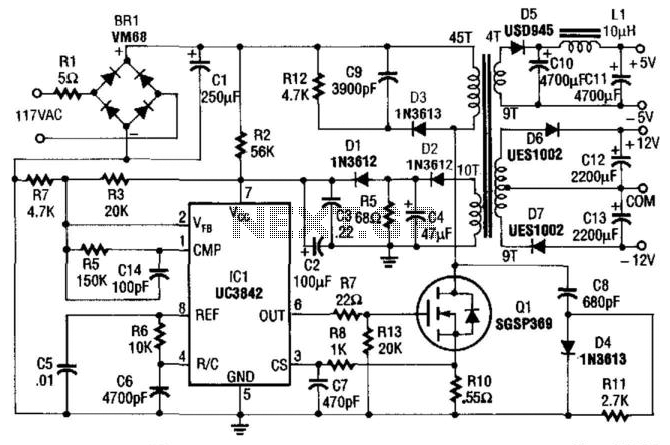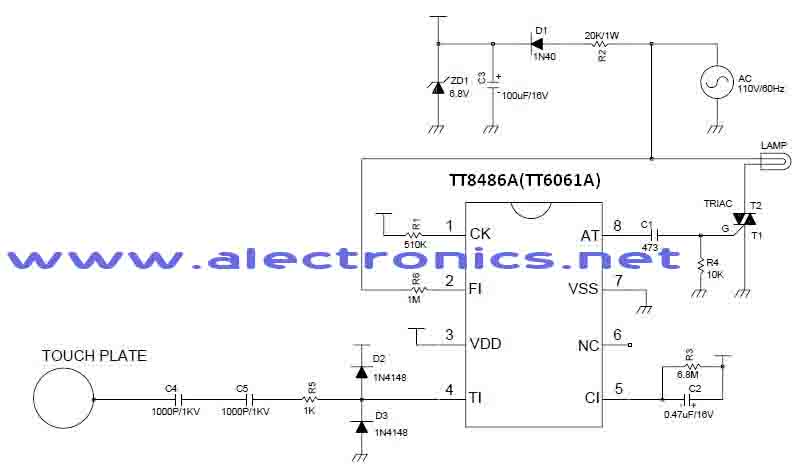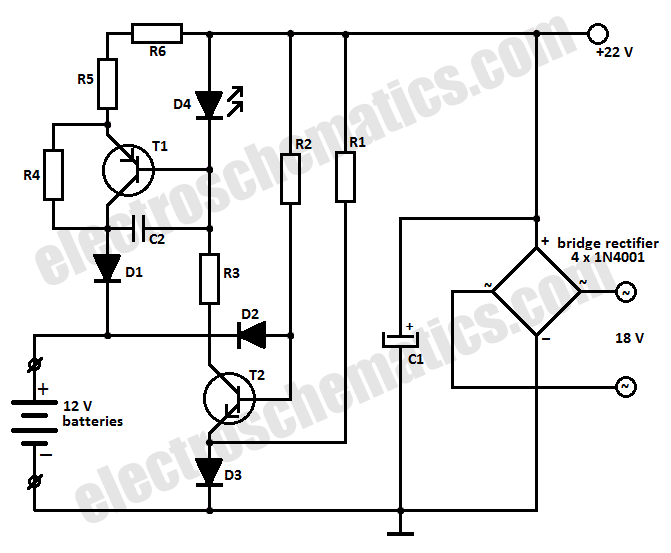
12v dimmer
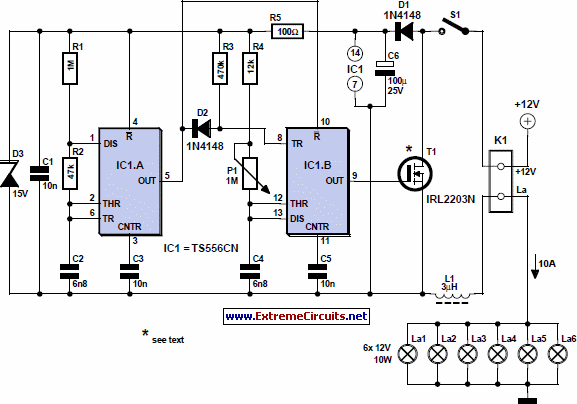
A dimmer is not commonly found in a caravan or on a boat. This document outlines how to create one. If the goal is to adjust the ambiance while entertaining friends and acquaintances, this circuit allows for that capability. Designing a dimmer for 12 V presents challenges. The dimmers typically used in residential settings are designed for AC voltage and rely on this AC voltage as a fundamental aspect of their operation. In this case, it is necessary to generate the AC voltage from the 12 V DC supply.
To create a dimmer circuit suitable for a 12 V DC environment, the design must incorporate a method for converting the DC voltage to an AC signal. This can be accomplished using an inverter circuit, which typically employs a switching mechanism to alternate the polarity of the voltage output. A common approach is to use a transistor or MOSFET in conjunction with a pulse-width modulation (PWM) technique. This method allows for the control of the effective voltage delivered to the load by rapidly switching the voltage on and off, thus simulating a dimming effect.
The circuit can include a microcontroller or a dedicated PWM controller to manage the switching frequency and duty cycle, allowing for smooth transitions in lighting intensity. The AC signal generated can then be fed through a transformer or a suitable load, such as LED lights or incandescent bulbs, designed to operate at lower voltages.
Safety considerations must also be taken into account, particularly regarding the heat generated by the switching components and the potential for voltage spikes. Adequate heat sinking and snubber circuits may be necessary to protect sensitive components. Additionally, filtering capacitors can be used to smooth out the output waveform, reducing electromagnetic interference and providing a more stable output.
Overall, the design of a 12 V dimmer circuit requires careful selection of components and a thorough understanding of both DC and AC electrical principles to achieve a functional and reliable dimming solution for mobile applications such as caravans and boats.A dimmer is quite unusual in a caravan or on a boat. Here we describe how you can make one. So if you would like to be able to adjust the mood when you re entertaining friends and acquaintances, then this circuit enables you to do so. Designing a dimmer for 12 V is tricky business. The dimmers you find in your home are designed to operate from an AC voltage and use this AC voltage as a fundamental characteristic for their operation.
Because we now have to start with 12 V DC, we have to generate the AC voltage ourselves.. 🔗 External reference
To create a dimmer circuit suitable for a 12 V DC environment, the design must incorporate a method for converting the DC voltage to an AC signal. This can be accomplished using an inverter circuit, which typically employs a switching mechanism to alternate the polarity of the voltage output. A common approach is to use a transistor or MOSFET in conjunction with a pulse-width modulation (PWM) technique. This method allows for the control of the effective voltage delivered to the load by rapidly switching the voltage on and off, thus simulating a dimming effect.
The circuit can include a microcontroller or a dedicated PWM controller to manage the switching frequency and duty cycle, allowing for smooth transitions in lighting intensity. The AC signal generated can then be fed through a transformer or a suitable load, such as LED lights or incandescent bulbs, designed to operate at lower voltages.
Safety considerations must also be taken into account, particularly regarding the heat generated by the switching components and the potential for voltage spikes. Adequate heat sinking and snubber circuits may be necessary to protect sensitive components. Additionally, filtering capacitors can be used to smooth out the output waveform, reducing electromagnetic interference and providing a more stable output.
Overall, the design of a 12 V dimmer circuit requires careful selection of components and a thorough understanding of both DC and AC electrical principles to achieve a functional and reliable dimming solution for mobile applications such as caravans and boats.A dimmer is quite unusual in a caravan or on a boat. Here we describe how you can make one. So if you would like to be able to adjust the mood when you re entertaining friends and acquaintances, then this circuit enables you to do so. Designing a dimmer for 12 V is tricky business. The dimmers you find in your home are designed to operate from an AC voltage and use this AC voltage as a fundamental characteristic for their operation.
Because we now have to start with 12 V DC, we have to generate the AC voltage ourselves.. 🔗 External reference
